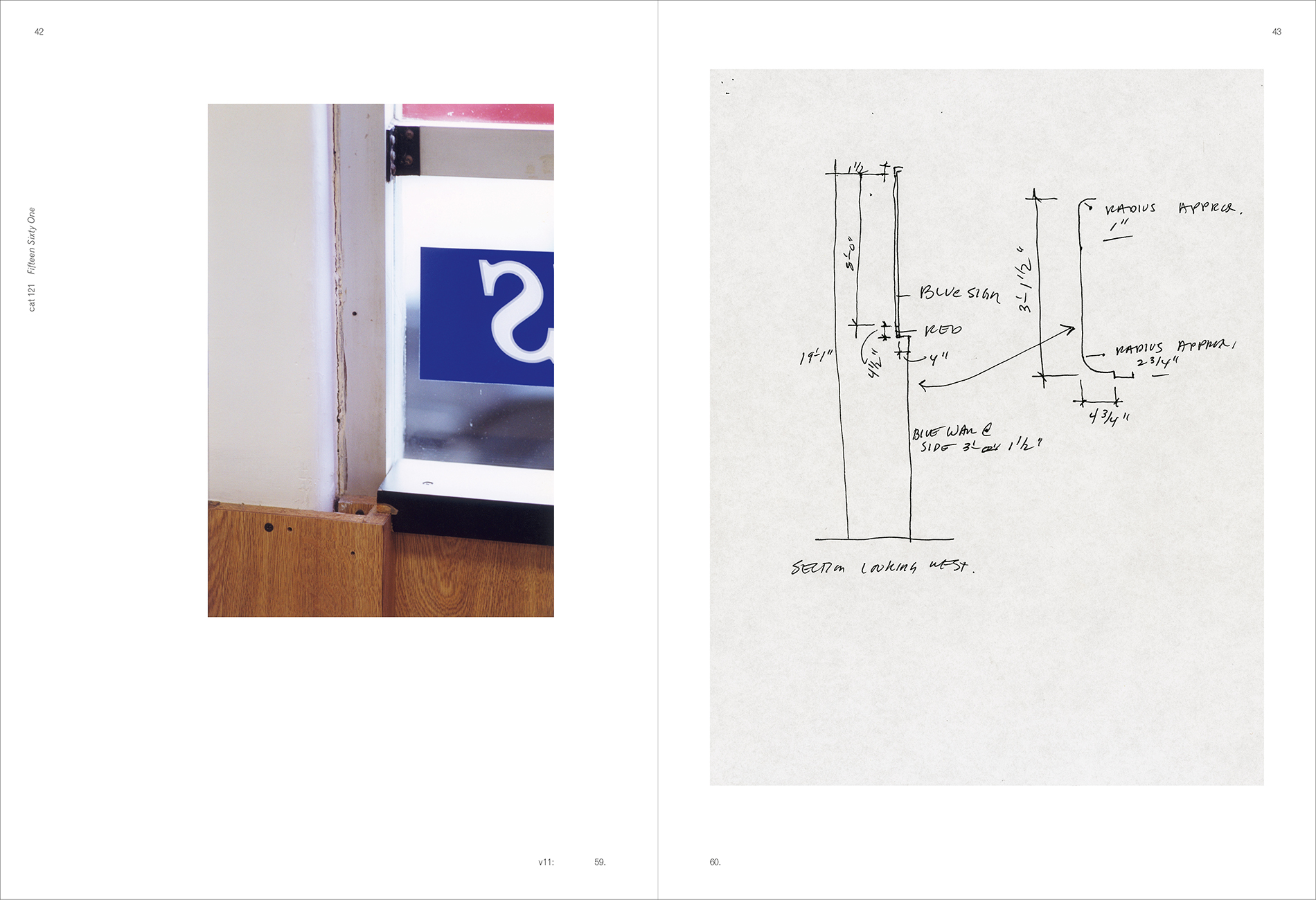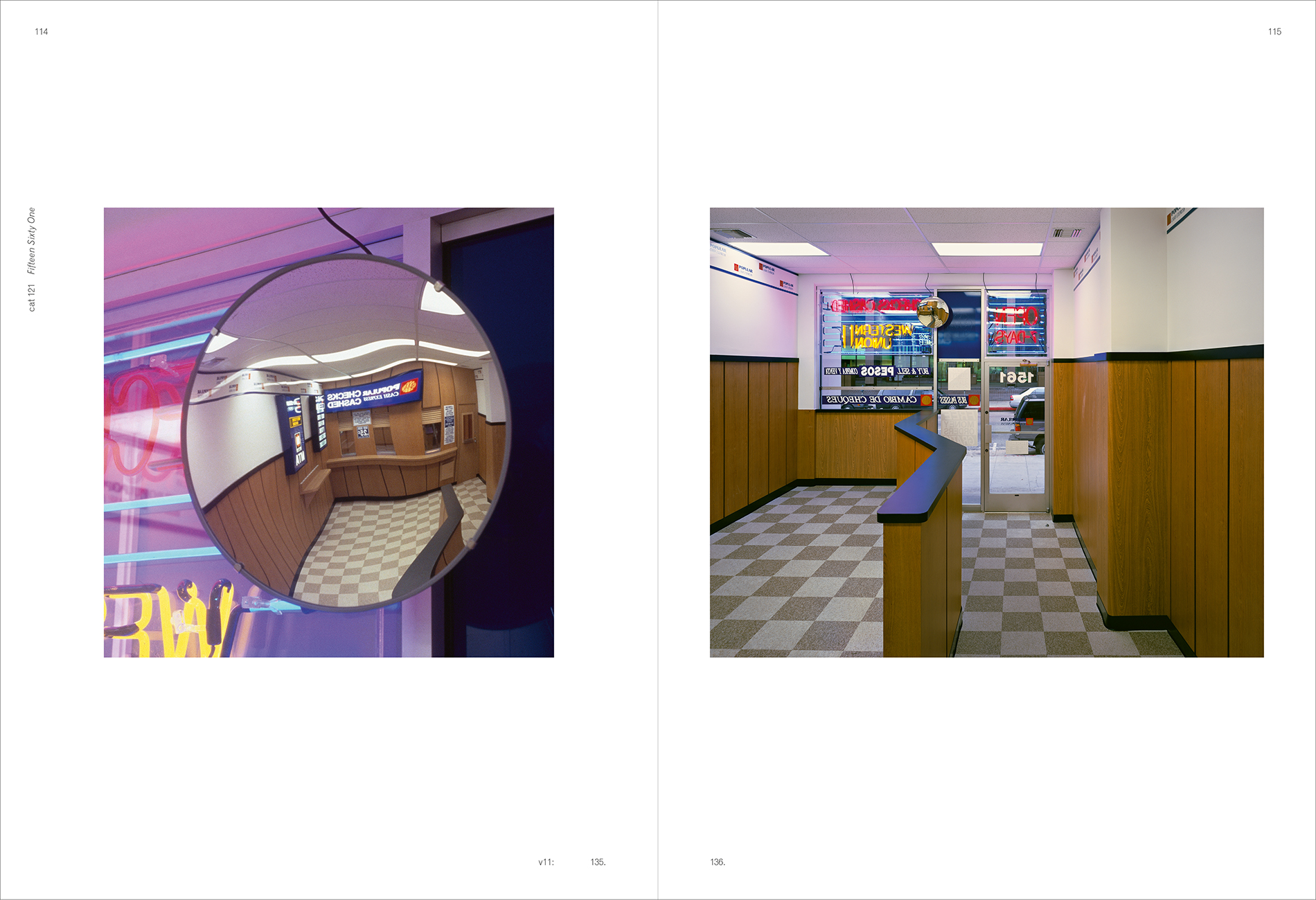Glen Seator: Making Things Moving Places
v11 / Los Angeles Projects, 1999
The work proposed a collapse of space between two locations, as if looking at Los Angeles as a continuous tracking shot and cutting out the space between – a splice or a cut and paste, if you will. It was important that this was a new address on the street and a sculpture in the gallery – one object that existed in two spheres with different identities. You could enter the work from the street, but you couldn’t enter the gallery from the interior of the work. You would enter this new address, come back onto the street, and, if you wanted, enter the gallery.
When I talk about situation, it’s about how things are not just identified as works of art but how they function on a psychoanalytic level. Fifteen Sixty One was fully conceived as a transportable object, as many works were starting in 1992 with Universal Corner. As Fifteen Sixty One was installed at Gagosian Gallery in Los Angeles, it was architecture on the street – a new address on the street – and a sculpture in the gallery. In that situation it was stuck between two realms, between two identities in the most literal way. However, it can be reinstalled in a large gallery, say at ninety degrees to the wall, and it will be a sculpture. It can also be installed in West Hollywood, where Banco Popular, the international bank with low production values, has some branches, and it will be clearly identified as architecture – quite invisible and not identified as art. Those situations are all of continuing interest: to think I’ve got it, but then I haven’t.
Over the past several years, I have wanted to erase the term site-specificity for myself. Gently erase it. My works were written about as „hyper-site-specific“ when the works were in fact fully transportable. Not so easy to do. Maybe it’s difficult for people to think about this, but I wanted the works to be transportable in a way that would be analogous to a photograph. It’s one of the things that people somehow can’t conceive of, or it’s overwhelming to think of these spaces as things and as things that can move around. Architects don’t think about what a room weighs. It’s also a way of challenging the authority of architecture, or of serious building at least….
With Cabinet, the sculptural object was a few feet away from its model, the place from which the interior of the object was generated, the place that it mimics. Then I thought, if I were to move it somewhere else in Bergamot Station, would it still be site-specific? With Fifteen Sixty One, I moved the object down the road. Incrementally I thought, how do we describe here? What is the site? Is the site something that exists at a cellular or molecular level? Is it the chair that I’m in? Is it the room, the immediate container of the building, the city block? This is where the children’s long address comes in. How do kids do it? The city, the state, the country, the continent, the hemisphere, the world, the galaxy, the universe.
v11 / Los Angeles Projects, 1999
Lay-flat softcover binding with a stitched book block and reinforced spine
Page dimensions: 19 x 26 cm (7.5 x 10.25 in.)
184 pages
3 works / 199 color reproductions of sources from the archive
cat 121 Fifteen Sixty One, 1999
cat 122 Untitled (Beverly Hills block) and Untitled (Echo Park block), 1999
cat 123 Three Sixty with Corners, 1999
Shown above:
v11 / pages 12-13; 18-19; 34-35; 36-37; 42-43; 86-87; 92-93; 114-115; 120-121; 124-125; 140-141; 144-145; 158-159; 164-165
works / cat 121 Fifteen Sixty One, 1999; cat 122 Untitled (Beverly Hills block) and Untitled (Echo Park block), 1999; cat 123 Three Sixty with Corners, 1999
sources / v11: 3, 4, 5, 6, 7, 17, 18, 50, 51, 52, 53, 59, 60, 108, 109, 110, 117, 118, 119, 120, 135, 136, 141, 142, 144, 178, 179, 190, 191, 192, 193, 200













